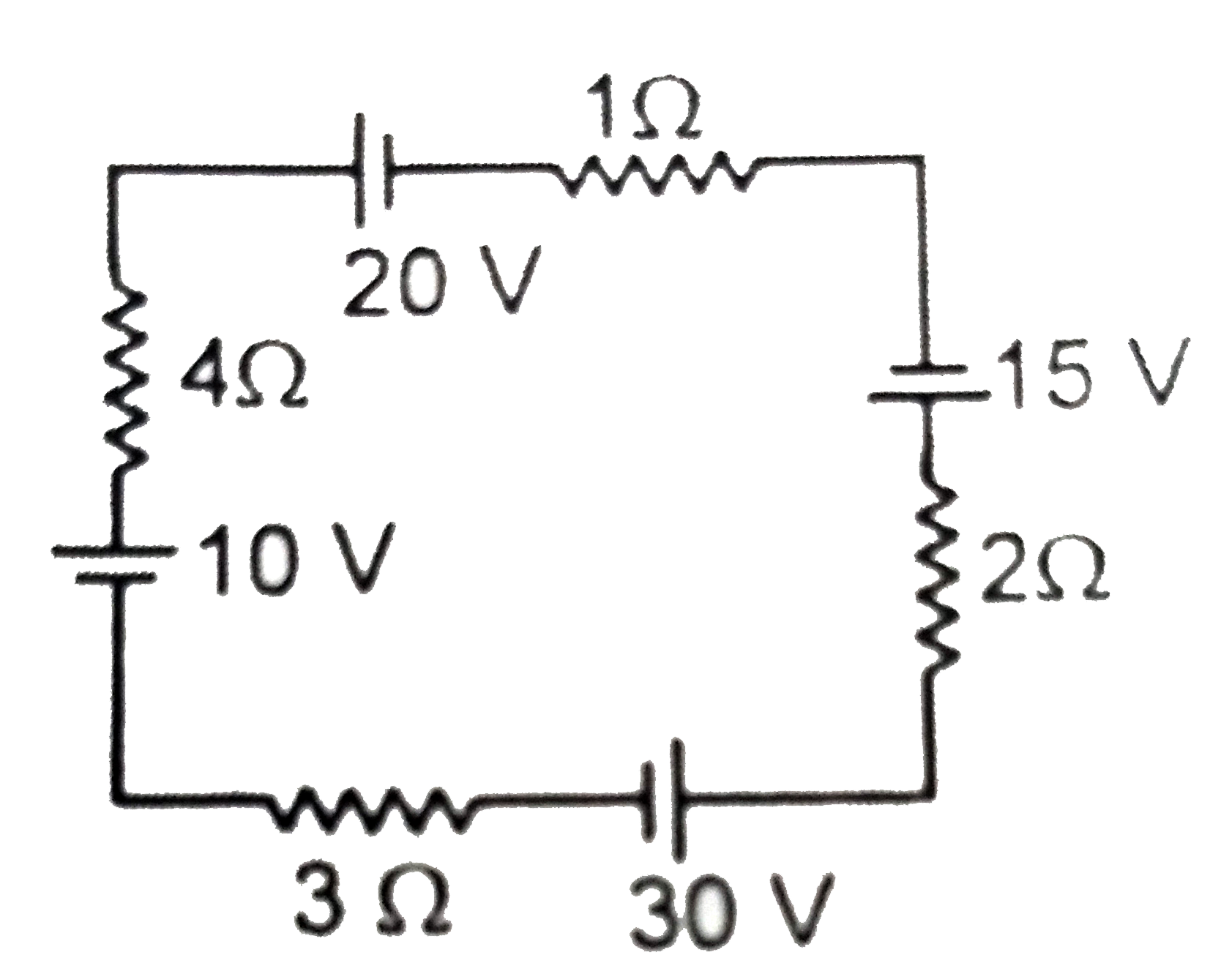A piece of semiconductors is connected in sereis in an electric circuit. On increasing the temperautre, the current in the circuit will
decrease
remain uncharged
increase
stop flowing
The correct Answer is:C
To solve the question regarding the behavior of current in a semiconductor when the temperature is increased, we can follow these steps:
1. Understanding Semiconductors:
- Semiconductors have a unique property where their conductivity can change with temperature. At low temperatures, they behave more like insulators, while at higher temperatures, they can conduct electricity better.
2. Effect of Temperature on Resistivity:
- As the temperature of a semiconductor increases, its resistivity decreases. This is because more charge carriers (electrons and holes) are generated as the temperature rises, allowing for better conduction.
3. Relationship Between Resistance and Resistivity:
- The resistance (R) of a material is related to its resistivity (ρ) by the formula:
R=ρLA
where L is the length of the semiconductor and A is its cross-sectional area. Since resistivity decreases with temperature, the overall resistance of the semiconductor also decreases.
4. Applying Ohm's Law:
- According to Ohm's Law, the current (I) flowing through a circuit is given by:
I=VR
where V is the voltage across the semiconductor. Since we have established that resistance (R) decreases with increasing temperature, we can infer that the current (I) will increase as a result.
5. Conclusion:
- Therefore, when the temperature of the semiconductor is increased, the current in the circuit will increase.
Final Answer:
The current in the circuit will increase when the temperature of the semiconductor is increased.
- Semiconductors have a unique property where their conductivity can change with temperature. At low temperatures, they behave more like insulators, while at higher temperatures, they can conduct electricity better.
- As the temperature of a semiconductor increases, its resistivity decreases. This is because more charge carriers (electrons and holes) are generated as the temperature rises, allowing for better conduction.
- The resistance (R) of a material is related to its resistivity (ρ) by the formula:
R=ρLA
where L is the length of the semiconductor and A is its cross-sectional area. Since resistivity decreases with temperature, the overall resistance of the semiconductor also decreases.
- According to Ohm's Law, the current (I) flowing through a circuit is given by:
I=VR
where V is the voltage across the semiconductor. Since we have established that resistance (R) decreases with increasing temperature, we can infer that the current (I) will increase as a result.
- Therefore, when the temperature of the semiconductor is increased, the current in the circuit will increase.
The current in the circuit will increase when the temperature of the semiconductor is increased.
Topper's Solved these Questions
- SEMICONDUCTORS AND ELECTRONIC DEVICESBOOK - DC PANDEY ENGLISHCHAPTER - SEMICONDUCTORS AND ELECTRONIC DEVICESEXERCISE - More than One Option is Correct
3 Videos
- ROTATIONAL MOTIONBOOK - DC PANDEY ENGLISHCHAPTER - ROTATIONAL MOTIONEXERCISE - Integer Type Questions
17 Videos
- SIMPLE HARMONIC MOTIONBOOK - DC PANDEY ENGLISHCHAPTER - SIMPLE HARMONIC MOTIONEXERCISE - Integer type questions
14 Videos
Similar Questions
The current in the circuit will be
View SolutionCurrent in the circuit will be

View SolutionFind the current in the circuit

View SolutionThe current I in the circuit is

View SolutionFind current in the circuit

View SolutionWhat is an electric circuit ?
View SolutionThe current in the given circuit is

View SolutionFuse is connected in an electric circuit.
View SolutionThe value of current I in the circuit will be

View Solution
The current (I) in the circuit will be:-
View Solution
